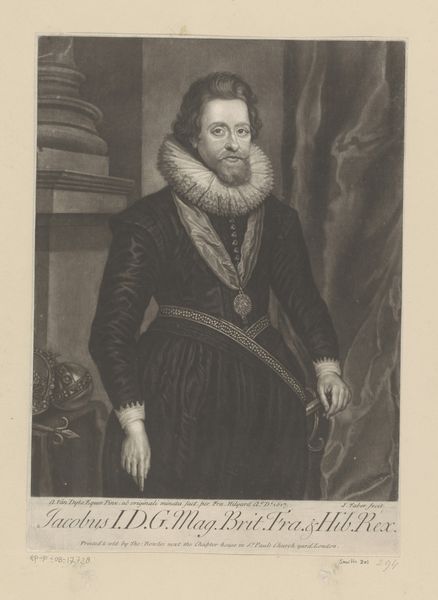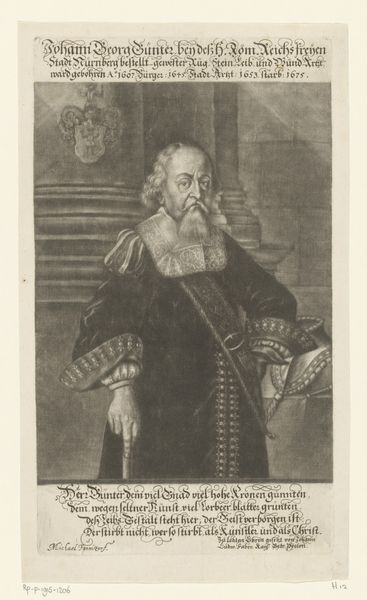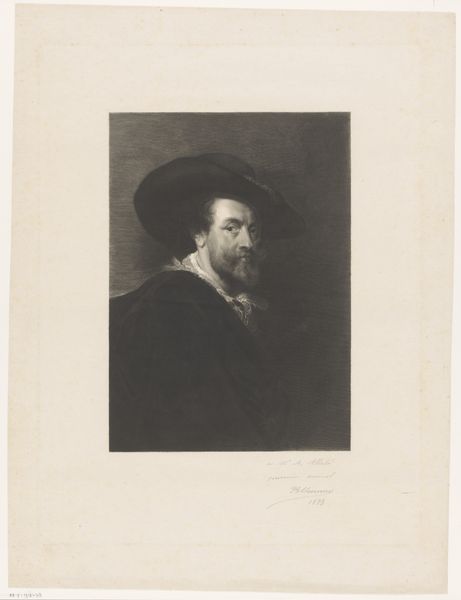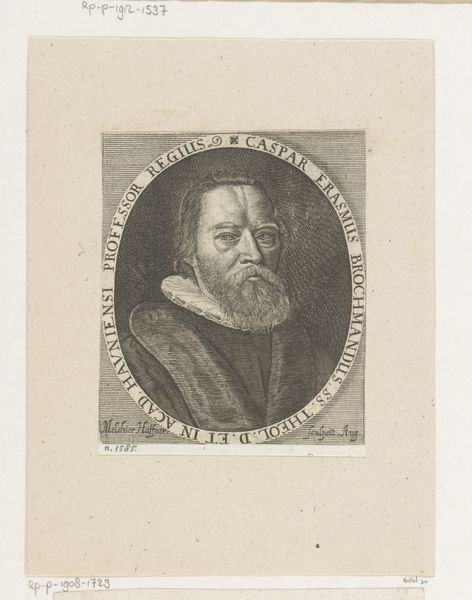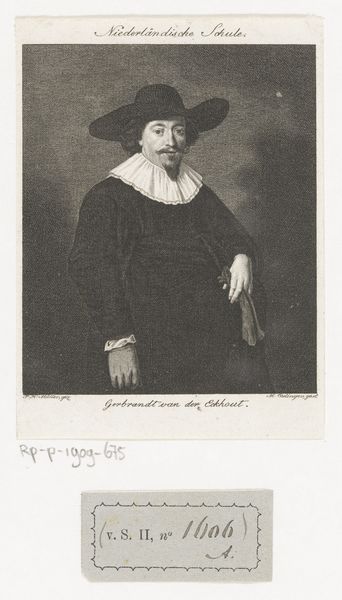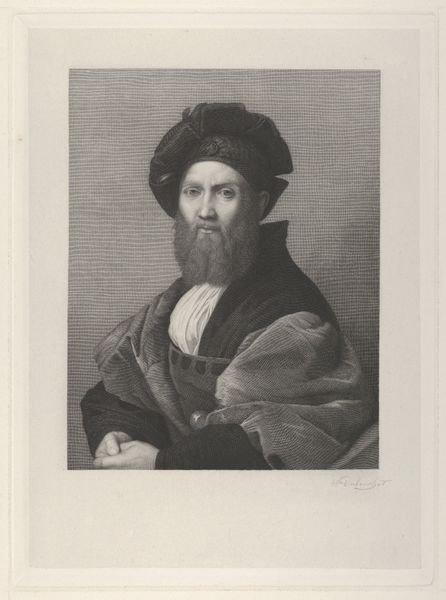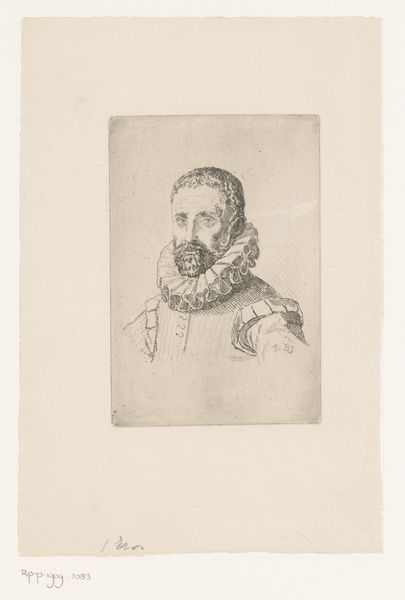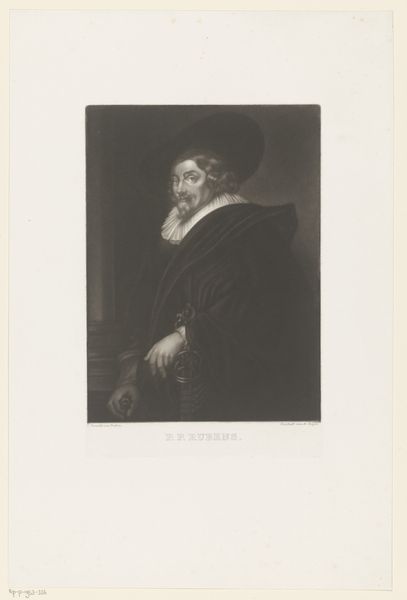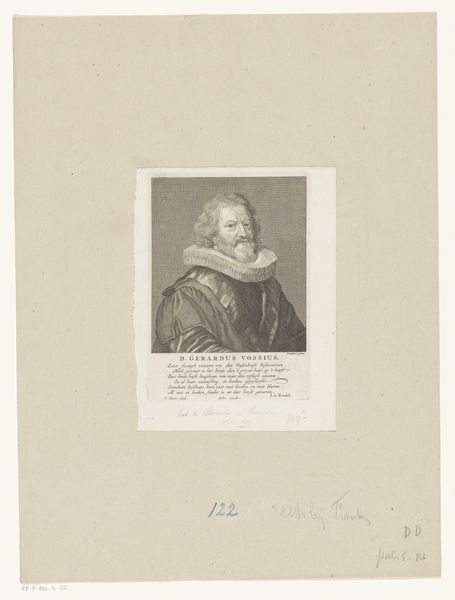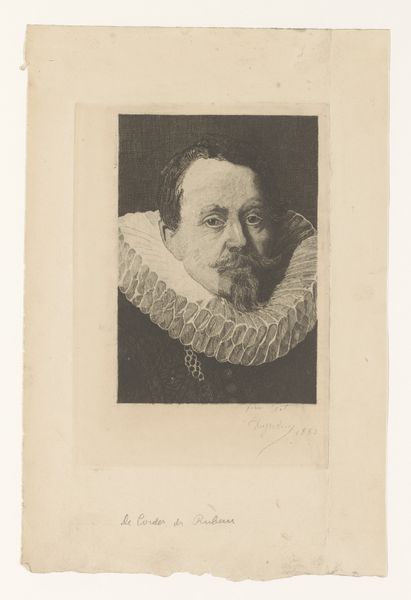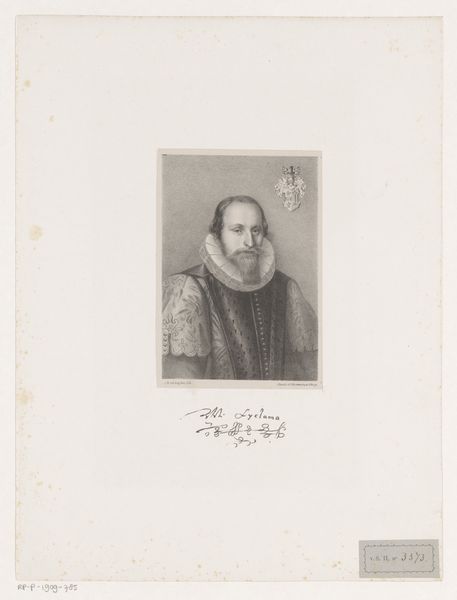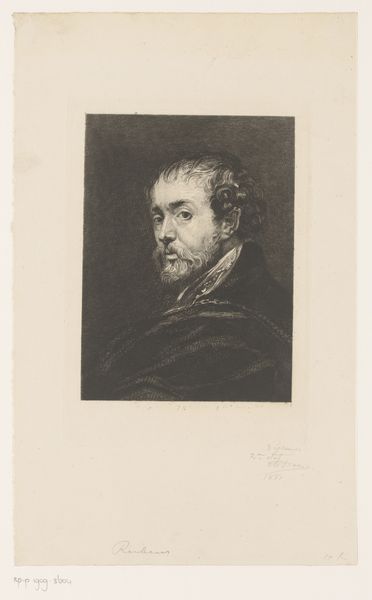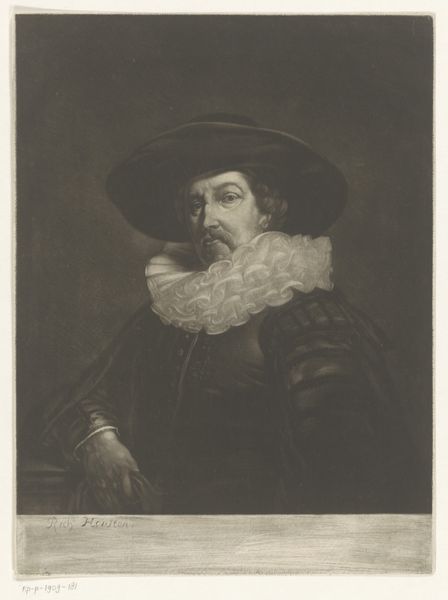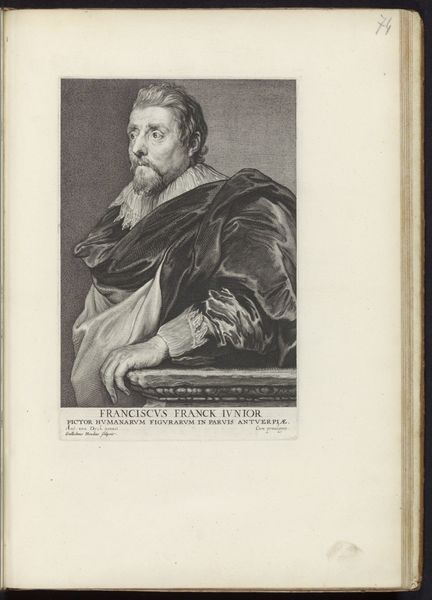
Dimensions: height 470 mm, width 335 mm
Copyright: Rijks Museum: Open Domain
Editor: So this is Henri de Groux's 1894 etching and engraving titled "Portret van Peter Paul Rubens". It's pretty somber, but also really intricate given the medium. What jumps out at you about this print? Curator: Well, I immediately see the dialogue between the artist, de Groux, and his subject, Rubens. This isn't just a copy; it's an intervention. The etching medium itself – the acid biting into the metal, the manual labor involved in each print – speaks to a kind of artistic labor paying tribute to another. Do you think he chose etching deliberately to align himself, materially, with Rubens’s artistic practice? Editor: That's interesting, I hadn't thought of it that way. So you’re focusing on the process, rather than just the image itself? I guess I was more caught up in the way it references Baroque portraiture, visually, like how the face is illuminated. Curator: Precisely. Consider the economic and social contexts too. By the late 19th century, the art market was changing rapidly, with printmaking becoming more accessible. Was de Groux consciously situating himself within a developing market of artistic production and reproduction? Think of how this impacts ideas about authenticity and the aura of the original artwork. Editor: I see what you mean. It makes me think about the intended audience and how they would have consumed an image like this back then. Was it about accessibility, about making Rubens available to a wider audience? Curator: Exactly! The print participates in a circuit of reproduction and consumption that speaks to both honoring artistic predecessors and participating in his own socio-economic reality as an artist producing work in the 1890's. What did you think about it being labeled as historical photography? Editor: I was curious as to why there was a tag as "historical photography". Does the mechanical method used to recreate an artist evoke something modern at that period in time, compared to other traditional artistic methods such as oil painting? Curator: Good point. Now we can explore these themes further in other works of the exhibit.
Comments
No comments
Be the first to comment and join the conversation on the ultimate creative platform.
